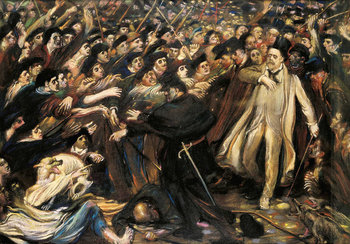
Executive Management
A senior manager who may be called on to report to the board of directors and/or other top level stakeholders of an organization such as investors. This includes familiar job titles such as chief executive officer, chief financial officer, chief marketing officer, head of sales, chief operating officer, chief human resources officer, chief information officer, chief technology officer and chief security officer. Typical accountabilities include revenue, strategy, planning, budgets, implementation of change, risk management, measurement, improvement, operations and compliance. Executive managers typically have managers and/or regular employees reporting to them. They may delegate responsibility but retain accountability.Middle Management
Middle management is any manager who reports to executive management. The responsibilities of middle management roles vary greatly. A middle manager may lead a business unit and be responsible for revenue. Alternatively, they may be responsible for a function that doesn't generate revenue such as measurement, improvement, risk management, relationships or communications. A middle manager may have an entire business unit reporting to them or they may have no direct reports whatsoever.Line Management
A line manager is a working-level manager who oversees the day-to-day outputs of an organization. This usually means managing employees to ensure they are productive and achieve a set of objectives. Line managers typically report to middle management.Management Levels vs Organizational Charts
Management levels are general categories of manager. This should not be confused with the levels of an organizational chart. For example, a CEO and CFO are both executive managers but they may be shown at different levels on an org chart. Likewise, senior line managers may have junior line managers reporting to them that create extra levels on an org chart.Management Levels vs Job Levels
Management levels should not be confused with job levels. It is common for an organization to have around 10 levels of seniority known as job levels, levels, grades or pay grades. At each management level there may be many job levels. For example, line managers may be level 3, 4 and 5 and middle managers 4, 5, 6 and 7. It is common for levels to overlap such that some line managers may be more senior and have a higher salary than some middle managers. For example, a line manager in sales might have a higher salary than all middle managers in information technology. Likewise, a non-management employee such as a technical specialist may be at a higher pay grade than most non-executive managers.Hierarchical vs Flat
A hierarchical organization has a tall org chart with many levels. Employees at the bottom may have managers who report to managers who report to managers and so on. A flat organization has a short but wide org chart with two or three levels. At a minimum, a firm usually has executive managers and employees. Another structure that is considered flat is executive managers, line managers and employees with no middle managers.Hierarchical vs Matrix
A matrix organization is a system where anyone can report to anyone depending on the context. In theory, a matrix organization can have no hierarchy. However, in practice they usually have a hierarchy of direct reports and a flexible system of dotted line reports whereby anyone can report to anyone in the context of a program, project or function. For example, a middle manager might report to a line manager for the duration of a project. At the same time, the middle manager may continue to report to others in the organization including executive management.| Overview: Management Levels | ||
Type | ||
Definition | A layer of accountability and responsibility in an organization. | |
Related Concepts | ||






























